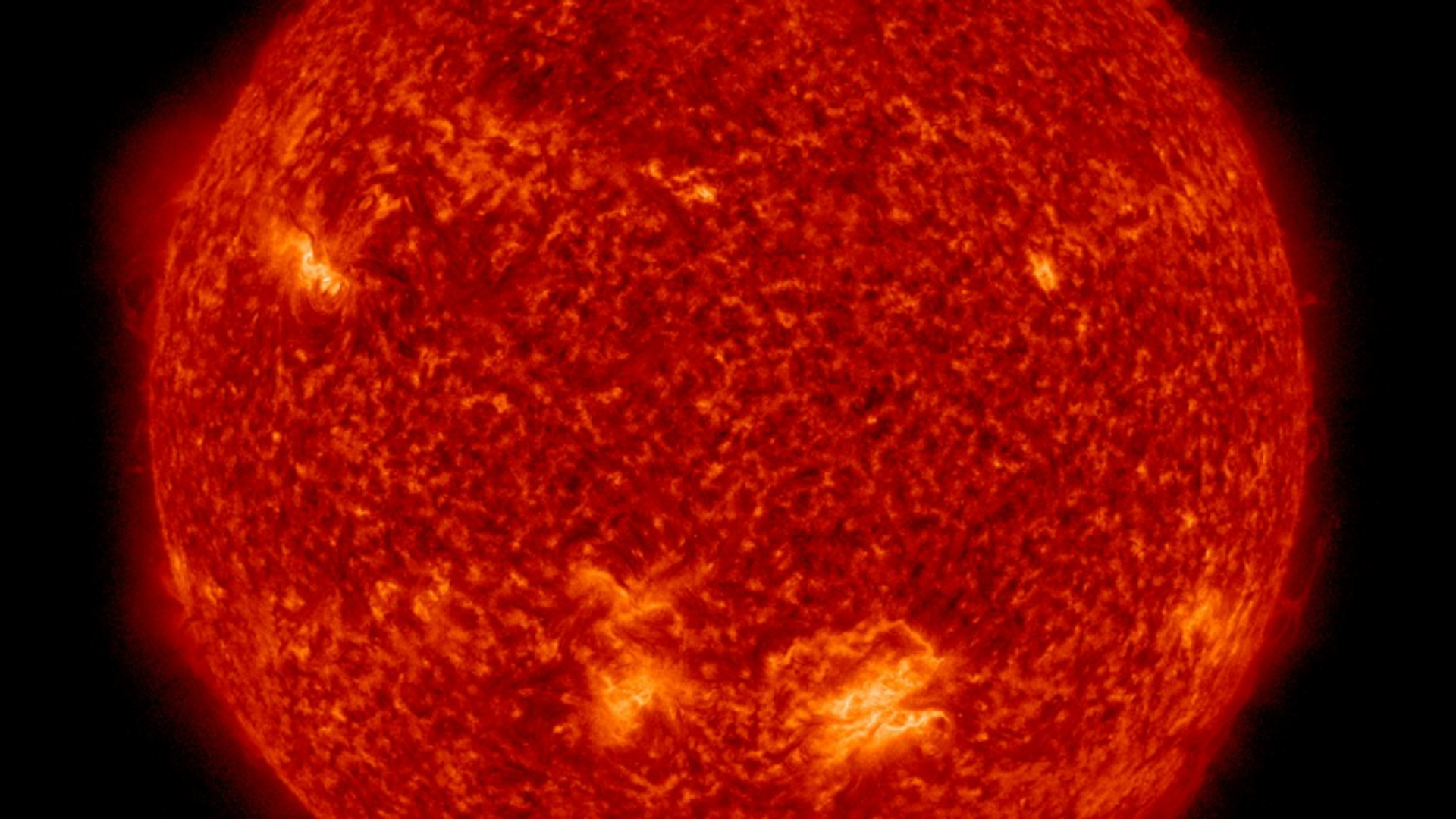https://sputnikglobe.com/20231113/shrinking-star-new-findings-reveal-suns-surprising-size-reduction-1114935718.html
Shrinking Star: New Findings Reveal Sun's Surprising Size Reduction
Shrinking Star: New Findings Reveal Sun's Surprising Size Reduction
Sputnik International
Recent calculations propose that the sun is slightly smaller than previously believed, offering a fresh perspective on our understanding of its dynamics.
2023-11-13T23:51+0000
2023-11-13T23:51+0000
2023-11-13T23:50+0000
beyond politics
science & tech
sun
space
space exploration
astronomy
https://cdn1.img.sputnikglobe.com/img/07e5/0a/1d/1090317888_0:168:768:600_1920x0_80_0_0_bb0830861b4578428b18a9c08a640720.png
New findings have revealed that the sun is just slightly smaller than the radius widely accepted by officials, with the celestial body slimming down to about 432,337.6 miles (695,780 kilometers).The updated figure is a fraction smaller than the accepted measurement of 432,468 miles (695,990 km), which has been upheld since the 1970s.Researchers studying the sun often employ total solar eclipses to observe its corona, or outer atmosphere, providing a basis for the standard radius measurement. However, to delve deeper into the sun's physics and atmosphere, more precise measurements are crucial. The constant motion of the sun, with waves traversing its surface and interior, presents challenges for accurate measurements.The sun's radius, as per this new study, is proposed to be approximately 432,337.6 miles (695,780 kilometers), aligning with the earlier f-mode data.While the discrepancy is only a fraction of a percent, it holds significance in deciphering the sun's nuclear reactions, chemical composition and fundamental structure. Astrophysicist Douglas Gough, a co-author of the study from the University of Cambridge, has emphasized the importance of these measurements in avoiding potentially misleading conclusions about the sun's internal structure.The study is currently posted on the preprint database arXiv.
https://sputnikglobe.com/20231105/impact-of-giant-crack-on-suns-surface-assessed-by-russian-scientist-1114741815.html
Sputnik International
feedback@sputniknews.com
+74956456601
MIA „Rossiya Segodnya“
2023
News
en_EN
Sputnik International
feedback@sputniknews.com
+74956456601
MIA „Rossiya Segodnya“
Sputnik International
feedback@sputniknews.com
+74956456601
MIA „Rossiya Segodnya“
sun, sun studies, what is sun radius, what is sun diameter, how big is the sun, space, space studies
sun, sun studies, what is sun radius, what is sun diameter, how big is the sun, space, space studies
Shrinking Star: New Findings Reveal Sun's Surprising Size Reduction
Understanding the sun is pivotal not only because it serves as Earth's most accessible star but also due to its influence on our planet. Magnetic storms originating from the sun can impact Earth's telecommunications.
New findings have revealed that the sun is just slightly smaller than the radius widely accepted by officials, with the celestial body slimming down to about 432,337.6 miles (695,780 kilometers).
The updated figure is a fraction smaller than the accepted measurement of 432,468 miles (695,990 km), which has been upheld since the 1970s.
Researchers studying the sun often employ total solar eclipses to observe its corona, or outer atmosphere, providing a basis for the standard radius measurement. However, to delve deeper into the sun's physics and atmosphere, more precise measurements are crucial. The constant motion of the sun, with waves traversing its surface and interior, presents challenges for accurate measurements.
In the 1990s, studies focusing on oscillations caused by waves, such as f-modes, suggested a marginally smaller sun, differing by 0.03% to 0.07% from the traditional measurements.
The latest research introduces another type of solar wave oscillation, known as a p-mode, supporting the findings from the 1990s.
The sun's radius, as per this new study, is proposed to be approximately 432,337.6 miles (695,780 kilometers), aligning with the earlier f-mode data.
While the discrepancy is only a fraction of a percent, it holds significance in deciphering the sun's nuclear reactions, chemical composition and fundamental structure.

5 November 2023, 14:24 GMT
Astrophysicist Douglas Gough, a co-author of the study from the University of Cambridge, has emphasized the importance of these measurements in avoiding potentially misleading conclusions about the sun's internal structure.
The study is currently posted on the preprint database
arXiv.



